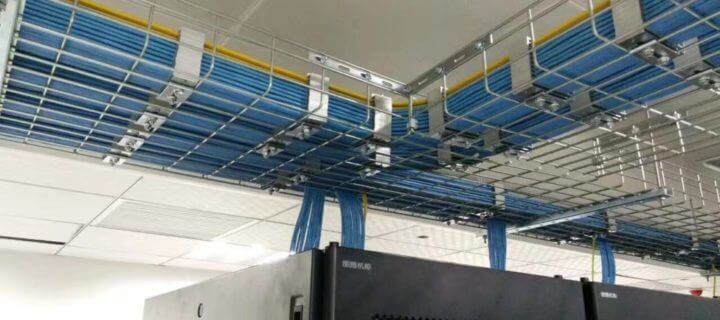Why Overloading of Cables should be Avoided at Every Cost?

Today’s rising technologies have given companies and individuals access to a tremendous variety of powerful tools and information sources. The need for adequate infrastructure is growing too because everyday technologies are expanding.
Faced with a wide need of cabling and wiring, and recognizing the future technologies will probably require even more cables and wires, thus building designers have increased their use of cable trays to arrange and route those many lines. Additionally cable trays provide protection from physical damage.
Different applications and requirements have given rise to different variants of cable tray and configurations, ranging from solid-bottom trays, to ventilated troughs, and wire mesh designs. The majority of the trays are manufactured in aluminum due to the material’s flexibility and relatively low cost.
Cable trays are treated as a structural component of a facility's electrical system. Cable trays are elements of a planned cable management system to support, route, protect and provide a pathway for cable systems. Because cable trays tend to be sturdy, installers and other construction crews give very little thought to their capacity. A popular belief seems to suggest that if additional wires or cable will physically fit into a tray, that tray can accommodate them.
In reality, cable trays are similar to ladders, wheelbarrows, and pickup trucks: if they’re loaded beyond the limits of their capacity, they’ll fail. Besides the potential physical damage to occupants and contents of the space below the cable trays, and beyond the disruption to data and communication that can result, when cable trays carry wires that are delivering electric power, there’s a potential for short circuits and fire, or even arc flash.
Also, because many types of wire and cables may emit heat when in use, overloading a cable tray may reduce the much-needed airflow, leading to disruptions and premature system failures as insulation breaks down from the excess heat. Also it may happen that some coatings or insulation could provide toxic fumes if they burn.
In most cases, cable trays should not be filled to more than 40 or 50 percent of the tray’s physical capacity or weight. In addition, cable trays must be properly grounded and tested before any wire or cables they contain can be energized.
Codes also provide specifics as to the types of wires, cables, and wiring methods that can be used safely in cable trays. In addition to materials, the choices may depend upon who will handle the installation and any maintenance. Certain materials, such as flexible cords, may be inappropriate because their insulation is more likely to become brittle over time, increasing the danger of fires and electrical shorts.
It’s generally easy to identify a cable tray that has been loaded beyond safe limits. Obviously, a tray that is showing damage from being overstuffed presents a hazard. But given that 40 to 50 percent of capacity figure mentioned earlier, any tray that is completely filled or that has wires and cables stacked up beyond its height is clearly overloaded. Steps should be taken to bring the tray back to a safe capacity. Often, some of the cables may have been abandoned when systems were upgraded. Removing the abandoned cables many bring the trays back into compliance with the code.
Hazards associated with overloaded cable trays:
Overfilling and improperly securing wires in cable trays can lead to a number of serious hazards. Weight is one issue; all cable trays and their associated supports are rated for a specific maximum weight, based partly on the allowable fill area and the spacing of the cable tray supports. Overloading cable trays can lead to a breakdown of the tray, its connecting points, and/or supports, causing hazards to persons underneath the cable tray and even leading to possible electric shock and arc flash/ blast events from component failure when the cables are suddenly no longer supported. Additionally, cables in trays can be damaged by improperly securing and installing other cables and wires in the same cable tray.
Grounding of cable tray systems is necessary for personal safety and protection against short circuits that can occur anywhere in the wiring system. Proper grounding must be done before cables are installed and tested before cables are energized. In addition to these general requirements, metallic cable tray systems supporting electrical conductors must be electrically continuous and effectively bonded as per the requirements.
Related searches
How To Maintain And Take Care Of Your Cable Trays! | Cable Trays And Their Applications | The Best Way To Keep Your Cables Protected | Why Cable Trays Install In Industries & IT Organization? | How Do Cable Trays Help To Save Space In Different Industries? | Choosing The Right Cable Tray Manufacturer
We are Cable Tray Manufacturer & Supplier in Pune Mumbai & India.
Do Visit Our Product Page









